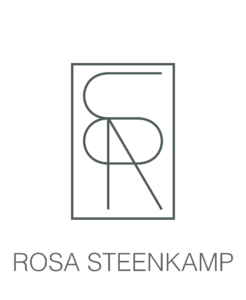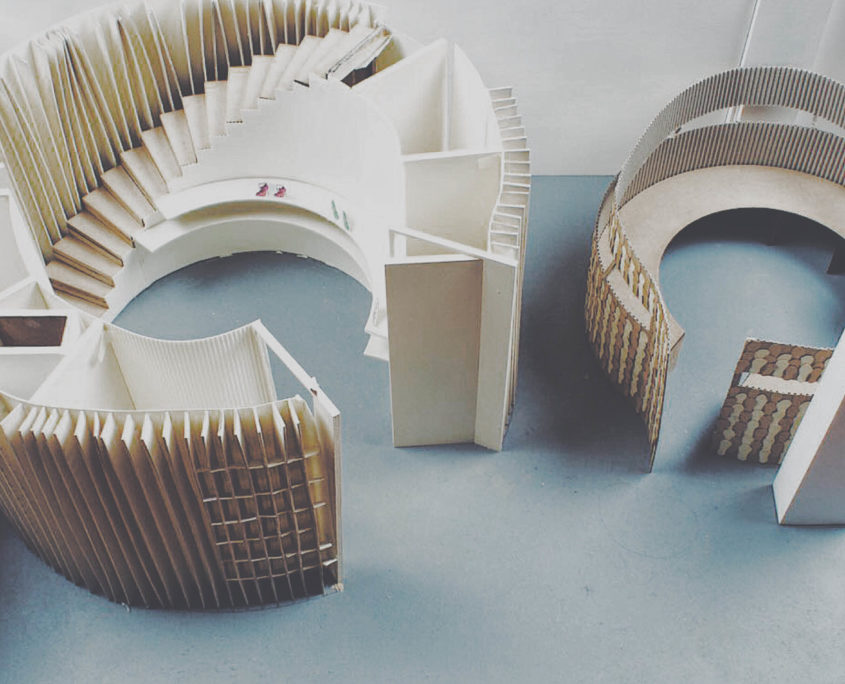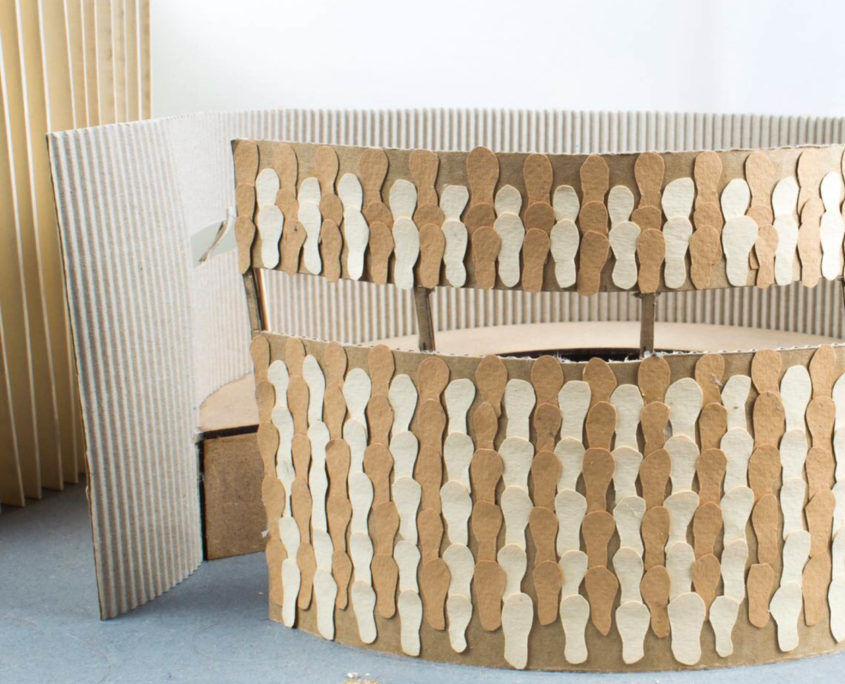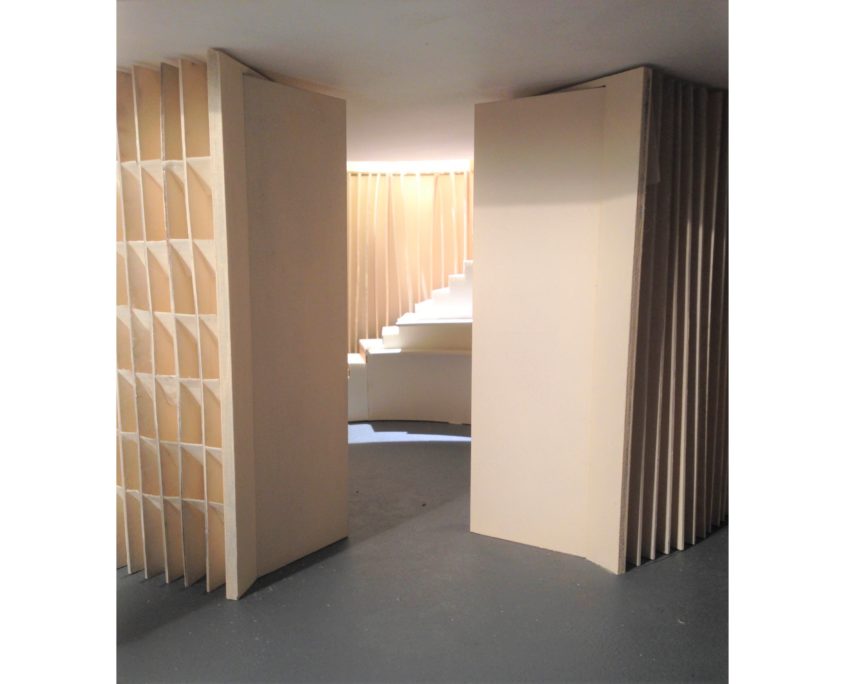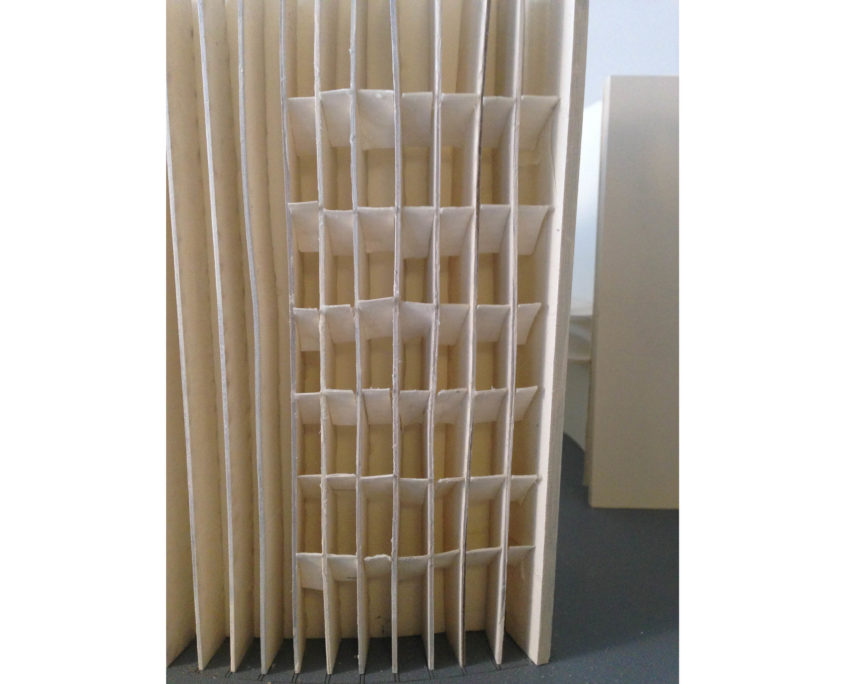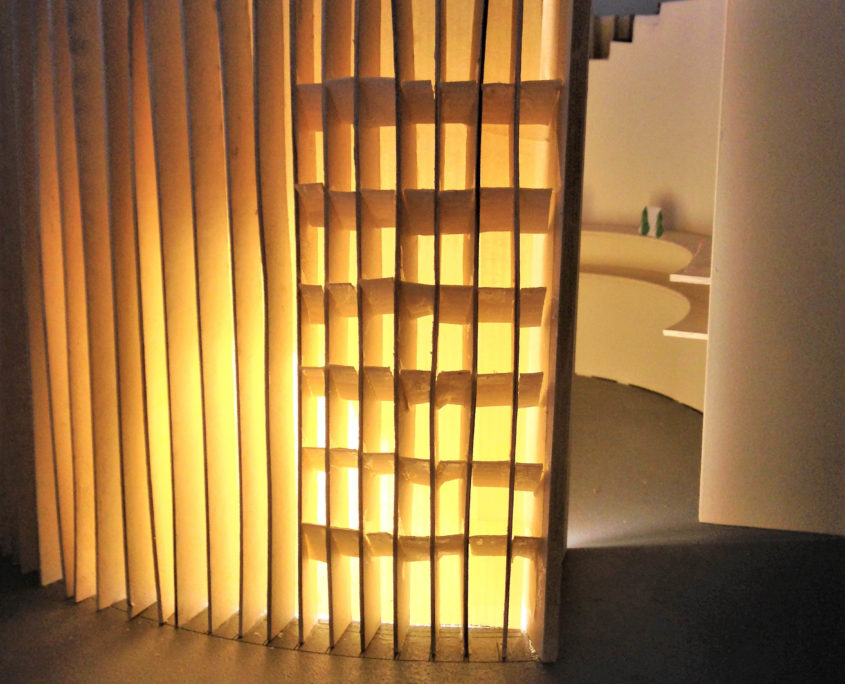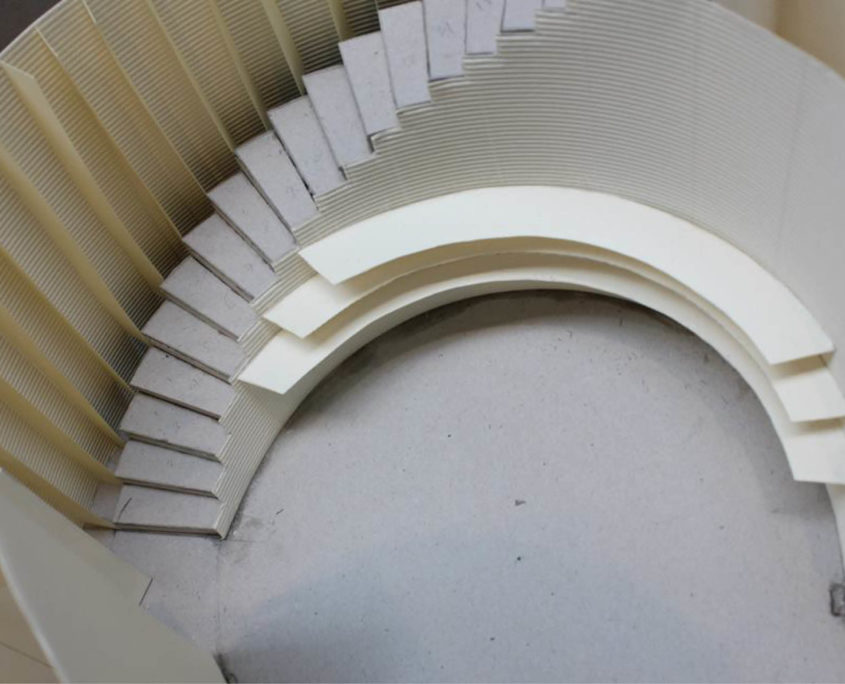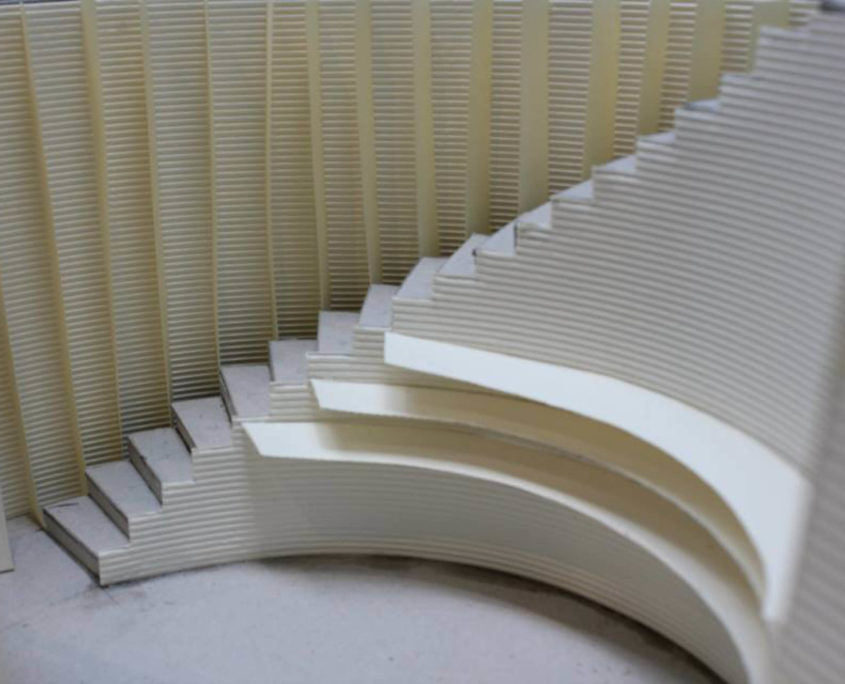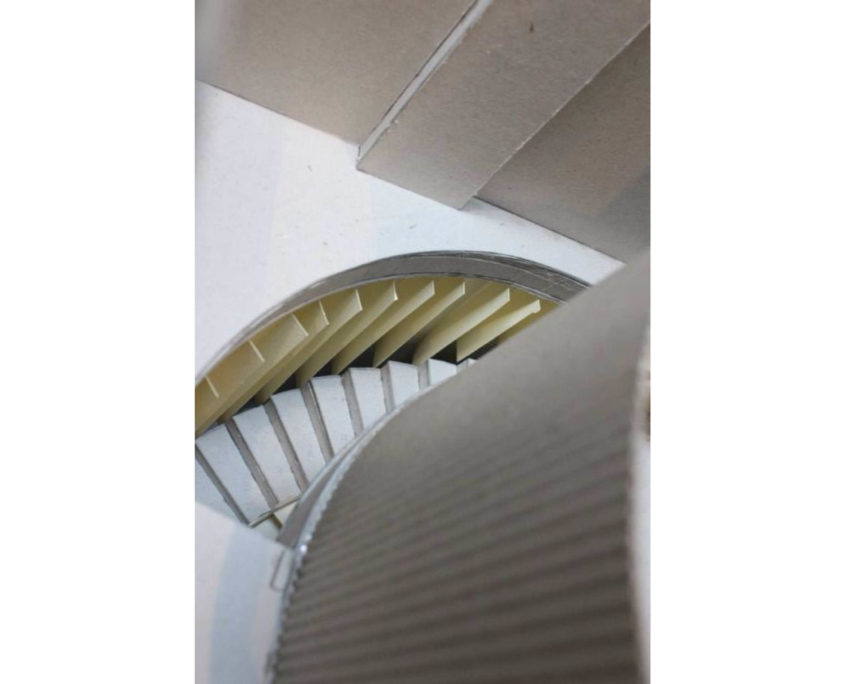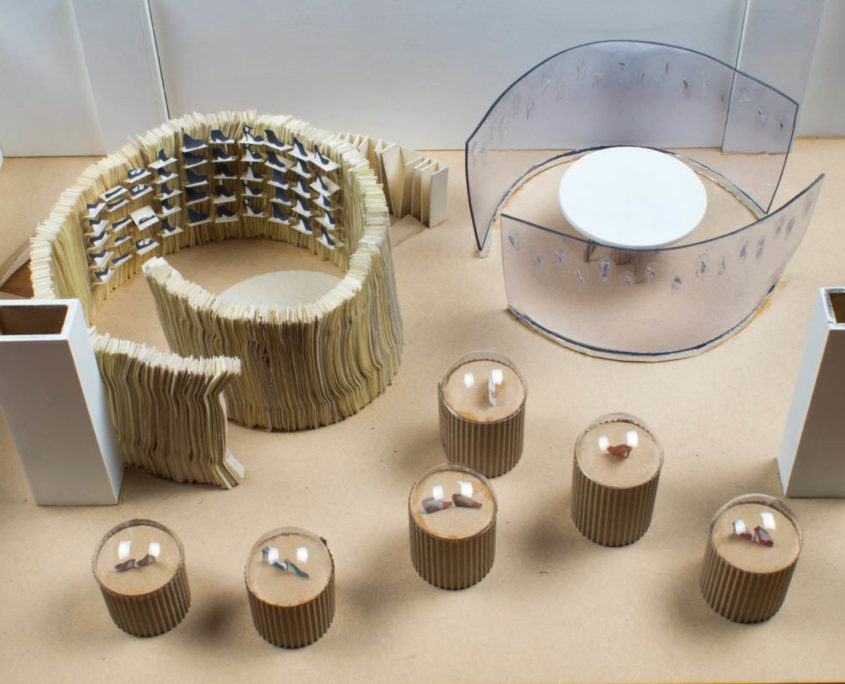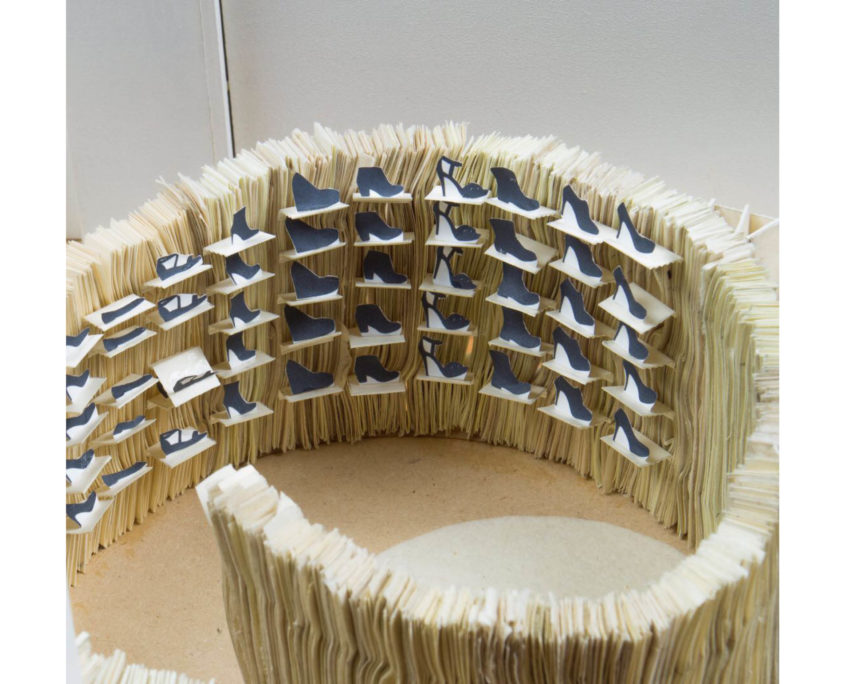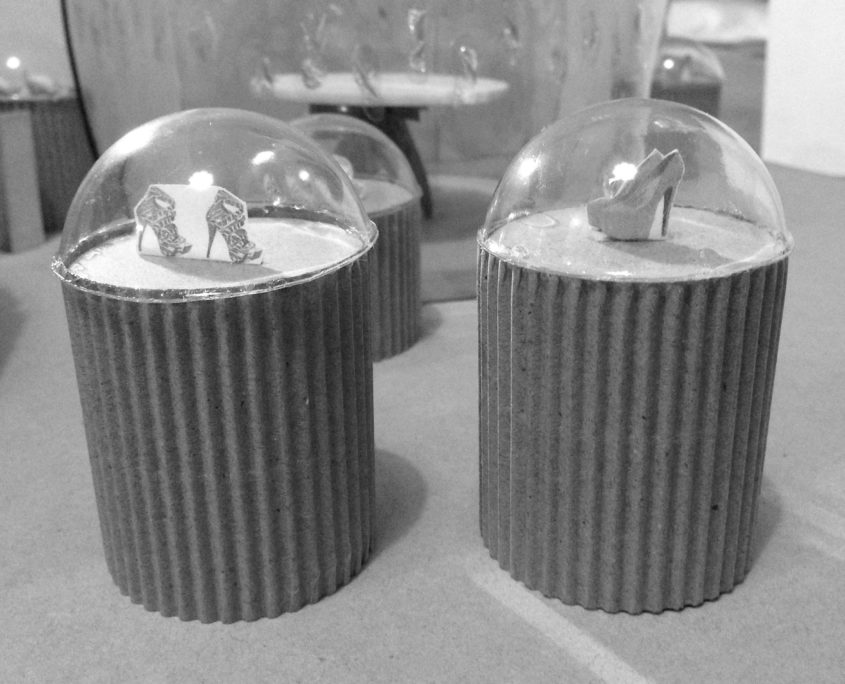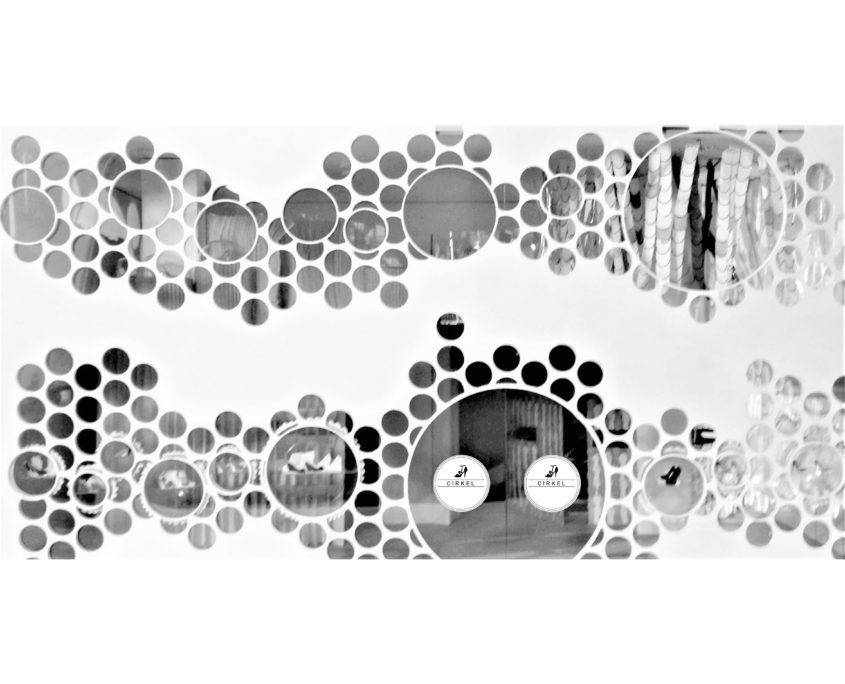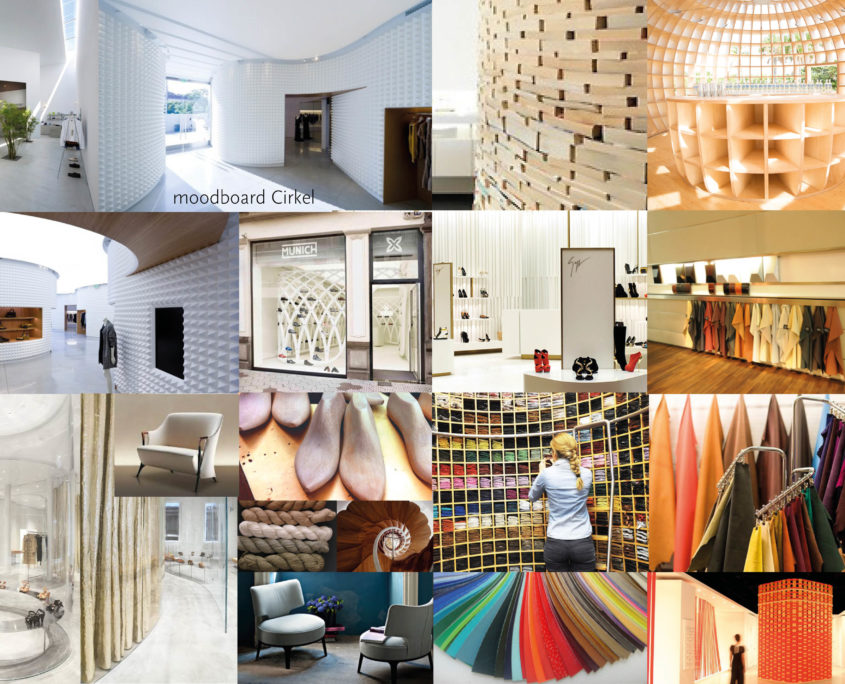Location
PC Hooftstraat
Amsterdam (NL)
Program
Luxurious shoe design shop
3D print atelier
Area
120 m2
University
Minor Retail Design project
BSc Architecture
Delft University of Technology
Delft (NL)
Tutors
L. de Wit
V. van der Meulen
Cirkel
PDF drawings
Cirkel
During the Minor Retail Design at TU Delft, students design a concept store. In this case for luxurious ladies shoes. The minor’s workshops and lectures focus on the position of the designer, the relationship with the city, the design of a space within the field of the retail, and the analysis of reference projects based on relevant themes. Based on a thorough analysis of the location in the city, the choice for the product and a specific user group is made. This allows the possibility to explore the full range of related interventions.
Cirkel originated from the idea that customers today have still very little to say about the product they are going to purchase. With current technologies it should however be simple to allow customers to be involved in the production process of a product. Cirkel is a luxurious ladies shoe shop where clients design and customize the ideal shoe under supervision. The excellent location to kick off such a concept would be in Amsterdam at the PC Hooftstraat, where exclusive brands try everything to catch the customer’s eye, and new retail ideas are tested.
Through the store website of Cirkel customers can already create an account and start the design process. Online and in store, the client can choose from a changing selection of shoe styles, fine leather types in various colours, and accessories. In Cirkel, this process continues offline with the help of an assisting staff member. The customer’s feet are measured electronically, so a pair of shoes is made to the exact right size. This personal information together with the client’s final wishes are sent to the shoe atelier at the ground floor of the shop. In the atelier, the shoe production process accelerates with the help of a 3D printer. The printer produces the soles and lasts of the shoes.
The design process is divided in five easy steps. The five circular spaces inside the store support this principle and provide character to the process and the brand. These circular spaces are constructed in natural and simple materials to emphasize the craftmanship of the product, and to create a refined environment.
The first circle is designed to store the lasts of loyal clients in small plywood cabinets in the outer wall. Looking at this circle from a distance, the lasts create a scaled surface to catch attention. Inside the circle one can sit down and measure the feet while being surrounded bij shelves showcasing exemplary shoe models for inspiration. Within the inner and outer wall of the first circle, one finds a cloak roam, storage space, a kitchenette, and a beautiful wooden staircase to the first floor.
After measuring the feet, one continues the design process in the second circular space. This circle is enclosed by a spiral of soft paper wall. Here, one can select and fit different shoe types from the permanent and seasonal collection.
The third circle is confined by numerous steel wires that hang from the ceiling showcasing the more neutral and natural fabrics. Passing through these strands, one is suprised by the great assortment of all the colourfull fabrics that the shop has to offer. Here, the fabric and colour of the shoes are chosen. The third circle is located near the facade, so materials and colours can be chosen in natural light.
The fourth space is enclosed by two half circles of transparent plexiglas. The plexiglass walls house small containers of accessories such as ribbons, zippers, strass stones, beads, and laces. A round table in the middle of the space provides a moment to sit down and collect all the design elements. Here, all information is added to the client’s account, so the shoe maker can collect all the correct data and start the shoe making process.
The shoe atelier is located on the ground floor next to the shop window. It is the fifth circular space in the shop. The walls of the atelier are also completed in plywood, and decorated with various leather shoe soles. Large windows on eye-level will provide enough daylight to the space, and through the shop window, one can see the shoe makers and 3D printer working.
Furthermore, the bubble patterned façade is made of HI-MACS, an outstanding solid surface material consisting of a delicate composition of acrylic, minerals and natural pigments to create a smooth,non porous, thermoformable and visually seamless surface. Through the bubble windows, passers-by can have a look at the most recently created luxurious shoes, waiting to be picked up by their owners.
